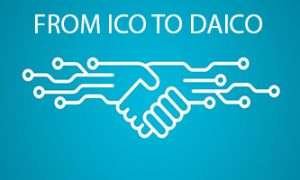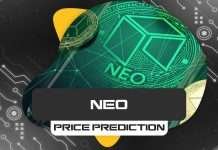
Since the advent of Bitcoin, there has been a buzz around the whole idea of cryptocurrencies and the decentralisation of the financial system.
Last year, the excitement reached fever pitch when Bitcoin rallied to an all-time high of almost $20,000.
2018 promises to be just as exciting; starting with the DAICO fundraising model drafted by the founder of Ethereum, Vitalik Buterin.
The proposal is designed to create a democratic process of controlling ICO’s (Initial Coin Offering) on the Ethereum network.
The current fundraising model for ICO’s has caveats that allow them to bypass traditional methods such as Initial Public Offerings and venture capital. This paved the way for a spate of ICO start-ups in 2017.
And early investors made a lot of money.
However, loopholes in the ICO fundraising model allow investors to be too easily manipulated.
Buterin’s proposal combines the former ICO concept with a Decentralised Autonomous Organisation (DAO) that is run by hardcoded rules, thus aiming to install new levels of control and protect investors against fraud.
In this article we shall explain:
- What is the Daico model?
- Difference between DAICO and ICO
- Who is Vitalik Buterin?
- Benefits of the Ethereum ICO
- ICO scams
What Is The DAICO Model?
https://www.youtube.com/watch?v=_CMceSAL8gY
2017 was a momentous year for ICO’s.
Not only did a plenty of cryptocurrencies hit all-time highs and propel themselves in the public eye, over $3bn was raised through crowdfunding initiatives.
However, there has also been a number of ICO scams, simply because the crowdfunding system is not tight enough to protect investors. The DAICO model seeks to address common problems.
The main idea of DAICO model is to enable ICO’s to raise fund for a single project, but at the same time reduce the risk of manipulation or fraud.
The model gives investors more control over how funding is spent and a smart contract is created to ensure the project team fulfils its promise.
Buterin also argues that deploying the DAICO system will reduce the cost of using Ethereum whilst placing a strong emphasis on developing the desired results.
The 15-page DAICO white paper, co-written with the TrueBit founder, Jason Tetsch, outlines what the principles of the DAICo system are intended to do:
- Leverage the wisdom of crowds
- Does not fully trust a single decentralised team
- Funding can be spread over time
- Based on a single project
- No 51% attack risk
The problem for ICO’s in the current climate is cryptocurrencies suffer from a lack of rational free-market economics, hype and manipulation.
As a matter of fact, Buterin has declared he will leave unless the Ethereum community (and other crypto-communities) grow up.
In a nutshell, the DAICO model starts with a contribution based project which allows the core team to raise funds.
Investors can send Ethereum to the DAICO and receive tokens from the ICO that is the equivalent of their “fiat” investment.
As part of this exchange, a smart contract is established which seals certain conditions of the investment. The tokens are subject to either capped sales (so investors are protected if the project fails), uncapped sales, an auction, an interactive coin offering or a know-your-customer sale.
ICO tokens can also be used for trading, but only once the fundraising period has ended. There is little difference here to the existing ICO model. It is what happens next that makes the DAICO model a stronger and feasible proposal.
Difference Between DAICO and ICO
What sets the DAICO model apart from the ICO model is a mechanism the authors described as a “tap”.
The function gives investors control of how much funding the project team has access to and how the money will be spent.
The protocol here basically works like a trust fund; the project team is not permitted access to money without the authorisation of token holders.
The team has to put in a justifiable request stating how much funding they need and what the funds will be used for.
For example, say the team need to install another server in order to make the blockchain quicker and more reliable. The ICO will request a raise in the “tap” value and investors vote on whether the team should be granted the funding.
However, the purpose of the tap is to provide the development team with a budget they need to complete their goals, but at the same time give investors the opportunity to agree to the idea, protect their investment and to ensure that goals are met.
When the core team hits their targets, the amount of the tap can be raised so the team can grow. Therefore the DAICO model can help ICO’s plan their strategy and have the incentive to meet deadlines.
Although there is still room for ICO members to defraud investors, the DAICO model reduces the risk of this happening for two reasons.
1. It should be possible to identify the culprits thereby acting as a deterrent.
2. Investors only hand over a portion of their total investment thereby minimising any potential loss
The funding community also has the option to bail out of the project by selecting to “permanently self-destruct the contract.” Investors can cancel their contract at any time and keep the remainder of their investment.
Who Is Vitalik Buterin?
Described by Fortune magazine as a “boy genius,” Vitalik Buterin is a Russia-born software developer but grew up in Canada from the age of six. Given his father, Dmitry, is a computer scientist, it’s hardly surprising that the young Buterin is a whizz with code.
Thanks to his gift, and probably an insight into computer coding from an early age, Buterin fashioned Ethereum (ETH) and blockchain technology after taking an interest in Bitcoin (BTC) in 2011.
ETH is now the second highest valued cryptocurrency behind BTC. His visionary project is capped at almost $30bn.
Buterin is also the co-founder of Bitcoin Magazine and a partner at Chinese venture capitalists, Fenbushi Capital, the first firm to actively put capital into ICO’s.
The Russian-Canadian programmer has since left the VC based firm but continues to act as an advisor. His reason for leaving Fenbushi was to concentrate on his Ethereum project following the social and financial hype in the cryptocurrency community.
Long story short, Buterin realised he needed to focus on Ethereum full-time or risk getting left behind.
In a statement released to TechCrunch, Buterin said:
“[the] hype, in general, has far exceeded the reality of what existing blockchain systems can offer. There is a lot of attention, and a lot of eager expectation, but as far as reality goes the practical usability of blockchains has in some cases even regressed due to rising transaction fees.”
Together with the Ethereum project, Buterin is working with the author of the Lightning Network for Bitcoin, Joseph Poon to develop Plasma.io, together with Sharding and Casper which are technologies designed to handle scalability.
Benefits Of The Ethereum ICO
To put the influence of Vitalik Buterin’s contribution into perspective, we should discuss what the Ethereum ICO brings to the table.
As it happens, the ICO explosion can mostly be accredited to Buterin and the Ethereum blockchain. Ethereum was launched in 2014 and raised $18m from a crowdsale – the most funding that had been raised by an ICO at the time.
The principles of the Ethereum blockchain captured the imagination of developers, financial institutions and some of the largest corporate enterprises in the world including Intel and Microsoft.
In 2017, the value of ETH saw an increase of 2700% – almost double Bitcoin’s uptick.
It’s not only the technical aspect of Ethereum ICO that is the core draw. Ether – as ETH is also called – also has a social impact.
One of the key attributes of the Ethereum blockchain is to create incentivised platforms whereby token owners interact and utilise the platform itself.
For example, an advantage of Ethereum ICO is to allow new businesses the opportunity to raise funds from global investors.
There are no borders and they do not have to ask permission from government authorities. This concept does not break any laws.
It merely allows everyday people to swerve the barriers of limitations imposed by governments to prevent people from making money.
However, the Ethereum blockchain does provide governance.
At the heart of the Ethereum blockchain is the “Ethereum Virtual Machine” (EVM) which executes smart contracts, digital records designed to ensure both sides of the agreement in a transaction are fulfilled.
Smart contracts calculate the amount to be paid, verify and confirm transactions, and distributes digital tokens appropriately.
Essentially, the project has the potential to solve efficiency problems across a broad spectrum of industries.
The decentralised contracts themselves are agreed upon by the parties in a contract but become automatically self-enforcing without the need for a middleman. This cuts down on fees right off the bat.
Furthermore, the information sealed within a smart contract cannot be manipulated or censored.
This offers a significant advantage to programmers in that they can automate the core processes of e-Commerce, finance, legal contracts, property exchange and anywhere else where a legally binding contract is appropriate.
How Does The System Work?
How the system works is to store money is an “escrow”, a cloud-operated deposit account which holds money.
The funds are not released until one party raises an invoice and the other party agrees to release it once the terms of the contract have been fulfilled.
Smart contracts also eliminate the need for costly transactions in the banking sector. Again, this reduces costs for consumers and companies which will be reflected in the price tag. Reduced prices help to encourage spending and strengthen the economy.
Another of the key advantages Ethereum offers is the capacity for users to create its own token known an ERC20. An ERC20 ‘Token Standard’ is a representation of value and makes it easier for users to exchange tokens for goods.
This does not mean that people will be able to create digital assets out of thin air – or ironically, the ether. ERC20 tokens are still tied to a value of the currency.
However, the advantage of these tokens is users can make transactions on the Ethereum network with ease.
The more tokens that are created, the more secure and faster the network becomes enabling developers to create a refined user experience.
ICO Scams
It’s no secret that the cryptocurrency industry is vulnerable to scams.
Whilst most ICO’s are sincere and see digital assets as the future, it is true that many others have been, and are being, used fraudulently as a quick money grab.
ICO’s have subsequently attracted bad press.
Crypto-projects have been accused of Ponzi schemes, and described as “scam tokens” and “snake oil.” Little wonder has given most ICO’s don’t offer anything more than a white paper and a website.
There have also been instances where ICO start-ups have not performed due diligence and offered outlandish promises in order to collect as many funds as possible.
Subsequently, issues have arisen whereby cryptocurrency projects have failed to deliver on their promise.
Although blockchain technology and digital tokens have real potential to disrupt the current paradigm, ICO scams have tarnished the wider cryptocurrency landscape.
The knock-on effect is for commentators in government and the financial sector to tarnish brands in the crypto space thus pushing the agendas of established financial institutions that are worried their monopoly on the monetary system is on the brink of disintegrating.
Despite the scams and bad press, investors have not shied away from investing in ICO projects.
It is estimated that around $3 bn was invested in 2017.
Furthermore, global banks and international corporations are also working on ways to integrate the blockchain technology into existing systems and pave a way for currencies to go digital.
The DAICO fundraising model may not be airtight, but it does offer some protections for investors and restores public faith in the larger crypto community.
Read more about ICOs and why 46% of them failed in 2017.



![Bitcoin Buyer Review of Official Website [2022] bitcoin buyer review featured image](https://bitemycoin.com/wp-content/uploads/2022/04/bitcoin-buyer-review-featured-218x150.jpg)
![Bitcoin Digital | Official Website Review [2022] bitcoin digital review featured](https://bitemycoin.com/wp-content/uploads/2022/04/bitcoin-digital-featured-218x150.jpg)





